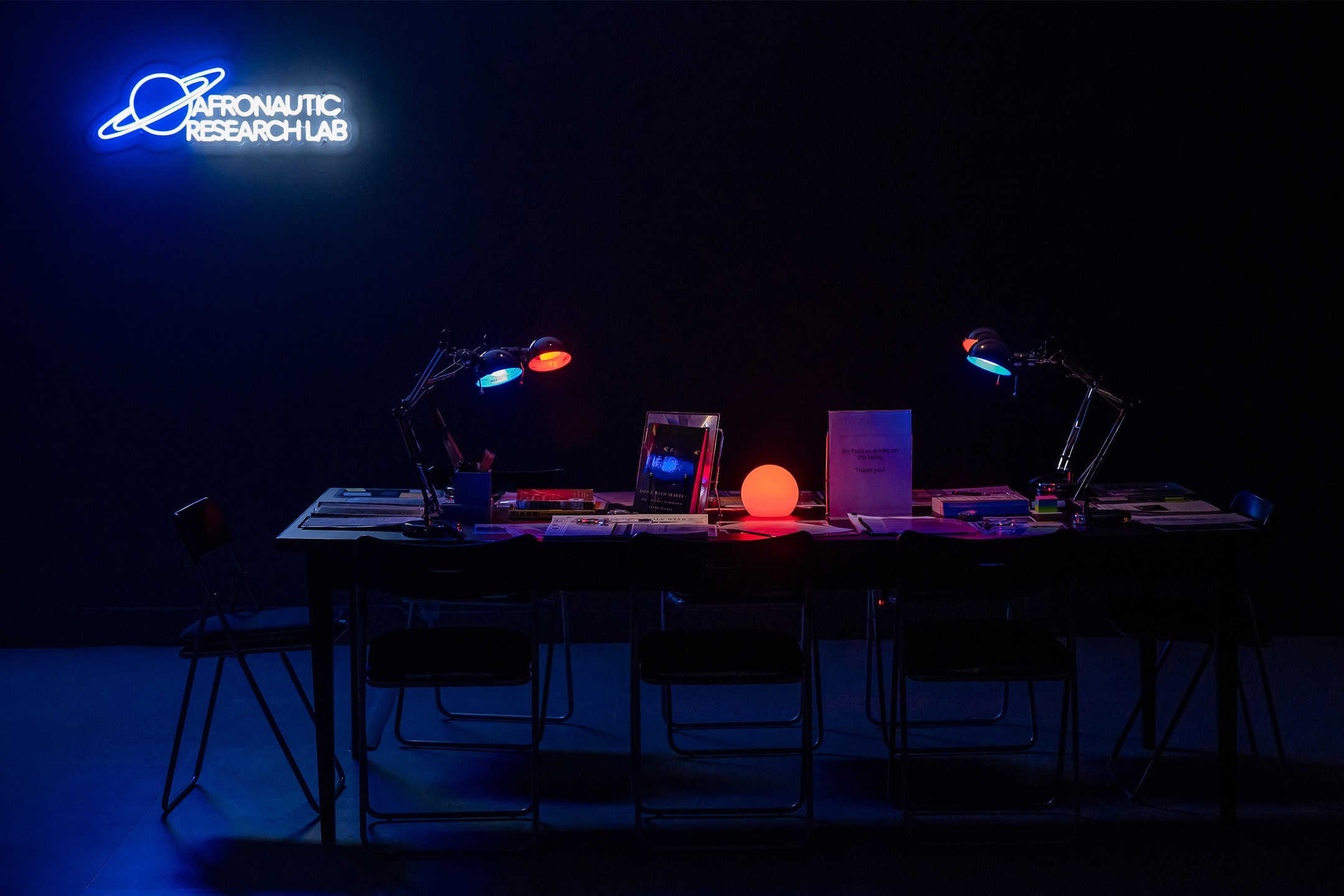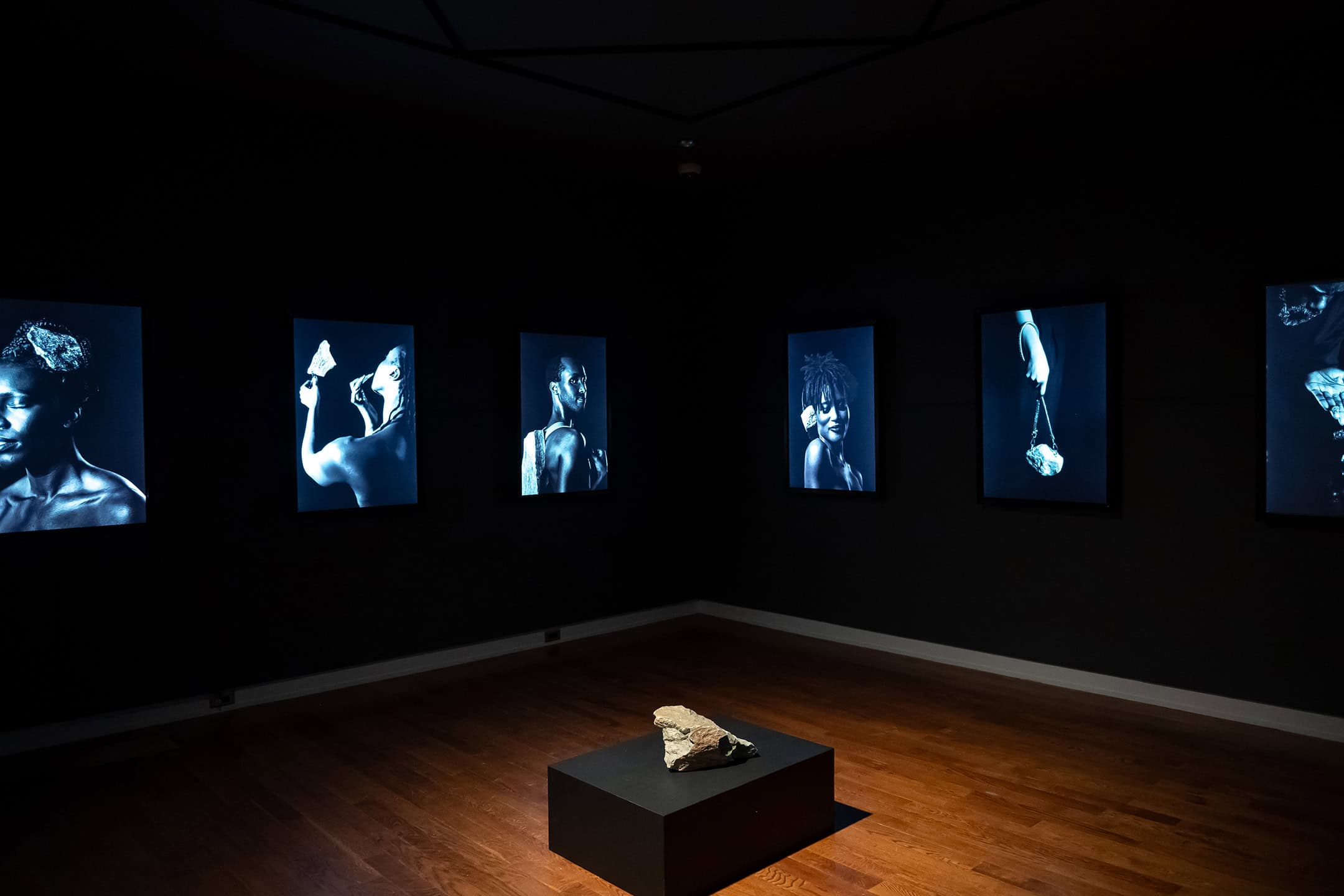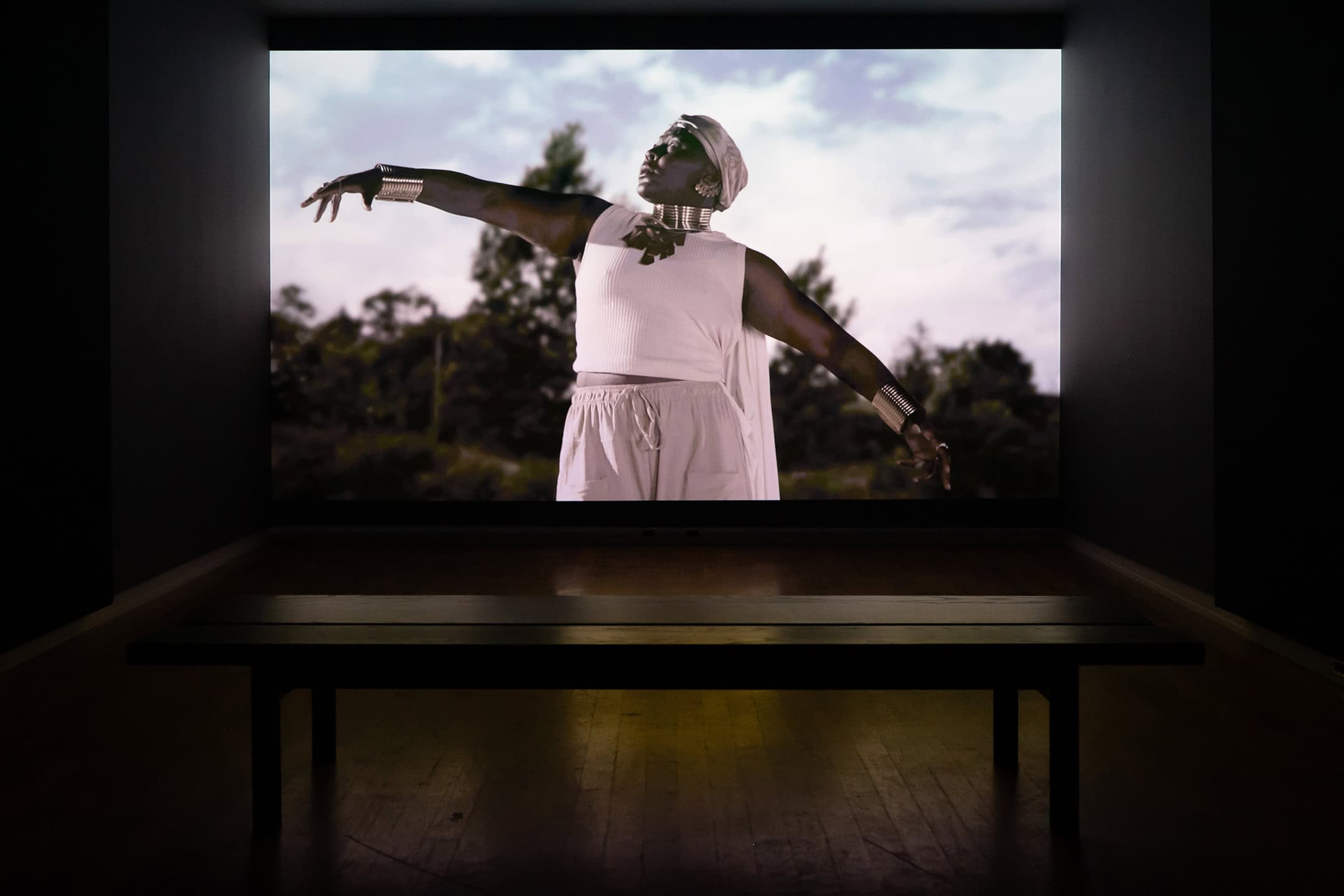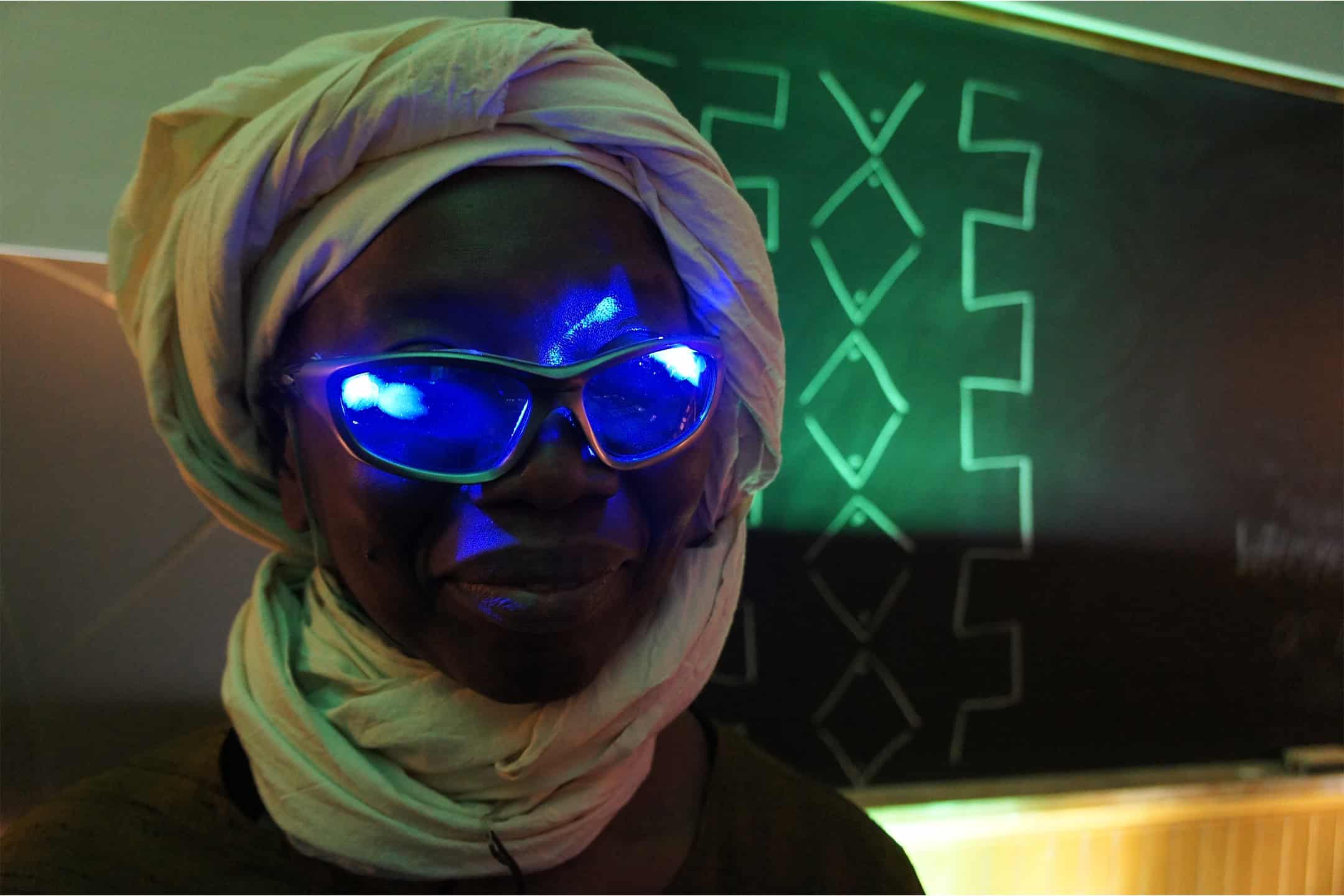In want of a visual treat, I happened upon Otherworld, which opened on September 4 at the U of T Art Museum’s Justina M. Barnicke gallery. It is artist and scholar Camille Turner’s first major solo exhibition in Toronto and is showing until March 22, 2025, featuring a fusion of both old and new projects across a variety of forms and mediums — namely performance, photography, installation, digital, and sonic mediums.
With this exhibition, Turner is — as she always has been — locating the lives of Black people inside Canada’s dark and often unacknowledged histories. She places central emphasis on Canada’s involvement in the trans-Atlantic trade of enslaved Africans — the voices of those who did not survive the passage across the Atlantic Ocean — the intimate physical details of ships and records from the exchange of human cargo.
Along these historical lines, Turner’s acute concerns manifest voices and arcane expressions of their own. Turner multiplies herself to become differing expressions of the need for repatriation; the need to restore a cosmological balance through remembering the past and bringing those lost inside it, those who are victims of it, back home to a final resting place that affords them dignity and acknowledges their personhood. As a ghostly woman in traditional white attire, she walks through several video installations whispering, witnessing, and conjuring this restoration.
In a video installation titled “Sticks and Bones,” Turner is dressed in black regency-inspired attire and trudges along an empty Newfoundland shore, gathering sticks, bones, and other items washed up by the Atlantic Ocean.
In another video installation titled “Sarah,” Turner plays an unnamed woman whose research leads her to the devastating truth about a slave ship named Sarah that was constructed in 1790 within the now-Canadian province Newfoundland, in which 135 people died en route as human cargo. While we do not know the researcher’s name, she gains a new understanding of herself by conjuring this slave ship and the knowledge of the human cost of the slave trade.
At a sensory level, the exhibition is textured with deep, soft sounds and stark imagery. On a solo tour of the space on the eve of the gallery’s opening, I observed a supreme silence textured by what felt like voices from the past, present, and future spliced together.
At the installation “Pods for Dreaming,” I lay down on the reclining seats within a simulation of a spaceship and listened to anonymous chanting, a man’s voice repeating, “Ancestors we are here, we are ready to honour you.” Out of another speaker, Turner’s voice ‘calls on’ the oceans, coaxing the water to divulge its secrets — meaning the bodies and bones of those that succumbed to the middle passage.
As the exhibition felt haunted by its knowledge of a tragic history, the understanding of the weight of slavery’s debts felt overpowering.



COURTESY OF DOMINIC CHAN
However, on opening day the only voices I could hear came from the jubilant chorus of guests and those who came to support Turner. When I listened closely, I could barely hear the voices of the installations. They seemed mute, at peace. As a Black person around other Black people in that space, interacting with Turner’s work felt like justice in itself. One felt as though our celebration evoked our ancestors, but then it became hard to tell whether it was in fact them that had summoned us inside the gallery or us that had summoned them. The title Otherworld seemed to be at work here. The two worlds — the living and the dead — seemed to be in conversation.
At a video installation called the “Afronautic Research Lab,” one of Turner’s personas — the previously seen woman in white — compiles historical documents on a table and literally opens up the archive, providing the ‘Afronauts’ with the necessary materials they need to understand the world that they have returned to.
Turner weaves an alternative history of African people who left the earth long ago to explore the cosmos, travelling through time and outer space. These Afronauts are Africans who later return home from their place in the stars to a post-colonial age profaned by historical wounds. The Afronauts come back to facilitate their people’s healing from the wounds of the past, an initiative that simultaneously functions to mend the evils of the trans-Atlantic slave trade by first remembering its victims.
Focal to the gallery space stands the very same research lab, the archive unearthed and brought into the light for all visitors to engage with. Throughout opening night, the audience became the Afronauts. We rummaged through old ’90s newspapers detailing factions of the Ku Klux Klan in Brampton and Oakville, a printout of Justin Trudeau in blackface from his younger years, posters detailing reward money for ‘lost cargo’ that ran away, and so on. The lab was quickly engaging, deeply heartbreaking, and effectively empowering with its new knowledge.Otherworld was a dream. I left the exhibition raw, bereft, and hopeful all at once. By layering history within counter-history, Turner disorients her audience and frees us from the confines of set histories and fixed futures, releasing us to reach for the stars as the Afronauts did while also reminding us to always return home to share our gifts. In a conversation with Turner, she said something that struck me. “If they can come down here, why can’t we go up there?” she asked. This, simply, is what Otherworld is about and it triumphs.


